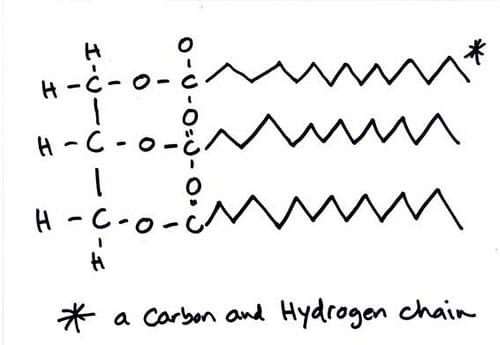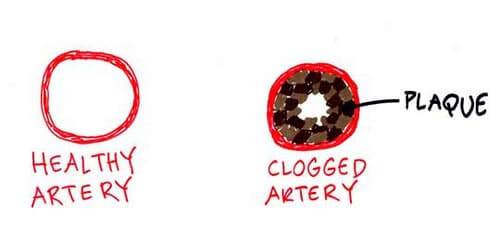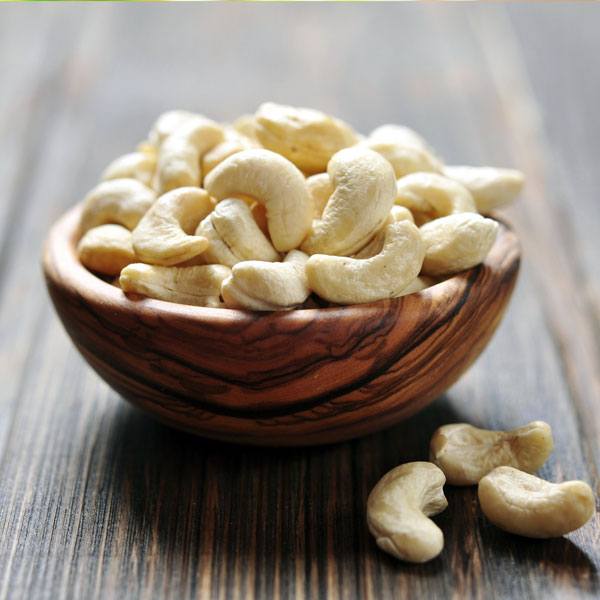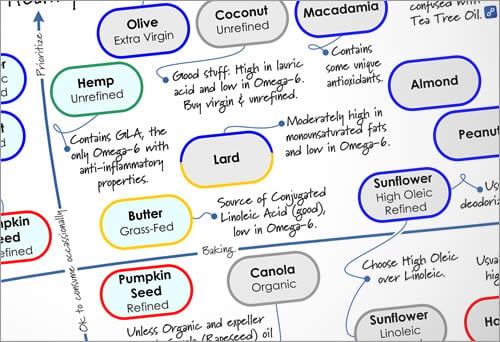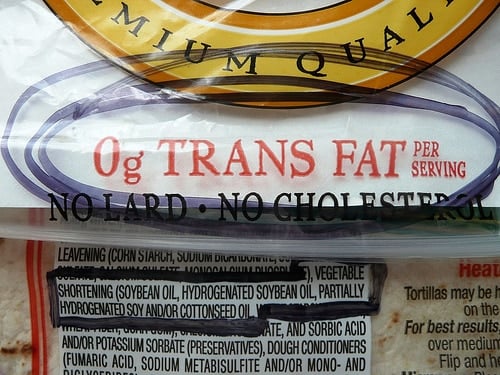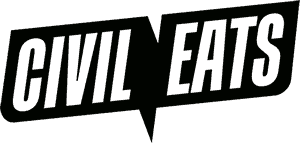Guest Post: A Quick Primer on Trans Fat
Last Updated June 16, 2016 · First Published January 22, 2011
Firstly let’s start off with some basic information about fat.
What we call “fat,” scientists call “triglycerides.” A triglyceride is made up of three fatty acids plus one glycerol. A glycerol is a bunch of carbons, hydrogens and oxygens attached together. A fatty acid is a long chain of carbons and hydrogens. It basically looks like this:
As you can see, triglycerides are molecularly created to stack together neatly. Triglycerides float around in your bloodstream and pack tightly together and glom onto your arteries, making it more difficult for your blood to pump through your body.
Pretty icky, right?
Now let’s talk about trans fat, also known as partially hydrogenated oil, also known as hydrogenated vegetable oil, also known as shortening.
Trans fat is made by taking an unsaturated oil*, like soybean or vegetable oil, and adding hydrogen atoms to it. These fats are considered by the food industry as stable and give processed foods a longer shelf life. Similar to saturated fats, trans fats also stack neatly together in your arteries creating that arterial plaque.
Nowadays trans fat is found in commercially prepared or prepackaged foods. Remember when reading food labels look for all those A.K.A.s I listed above.
* Unsaturated fats do not stack neatly together; that’s why they are called “healthy” fats.
—
Andrew’s Note: Unsaturated oils are generally liquid at room temperature, while saturated fats are solid. In addition to making them stable and increasing the shelf life, as Mary mentioned, hydrogenation also changes the texture of unsaturated oil so that it becomes solid or semi-solid at room temperature. Margarine is the classic example of this. Originally, people thought it was healthier than butter, since we were starting with the “healthy” unsaturated fats, but now, we’ve learned that trans fats are far worse for us than saturated fats.
Also, don’t forget about The Trans Fat Loophole!
